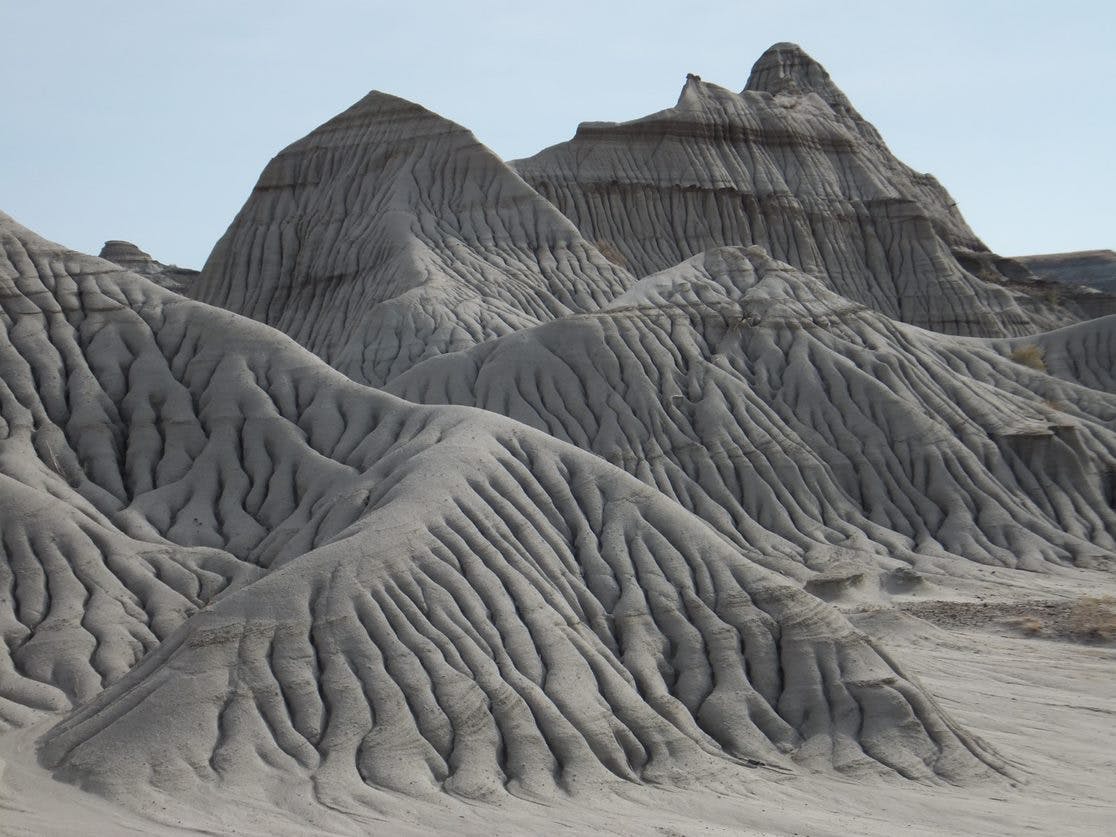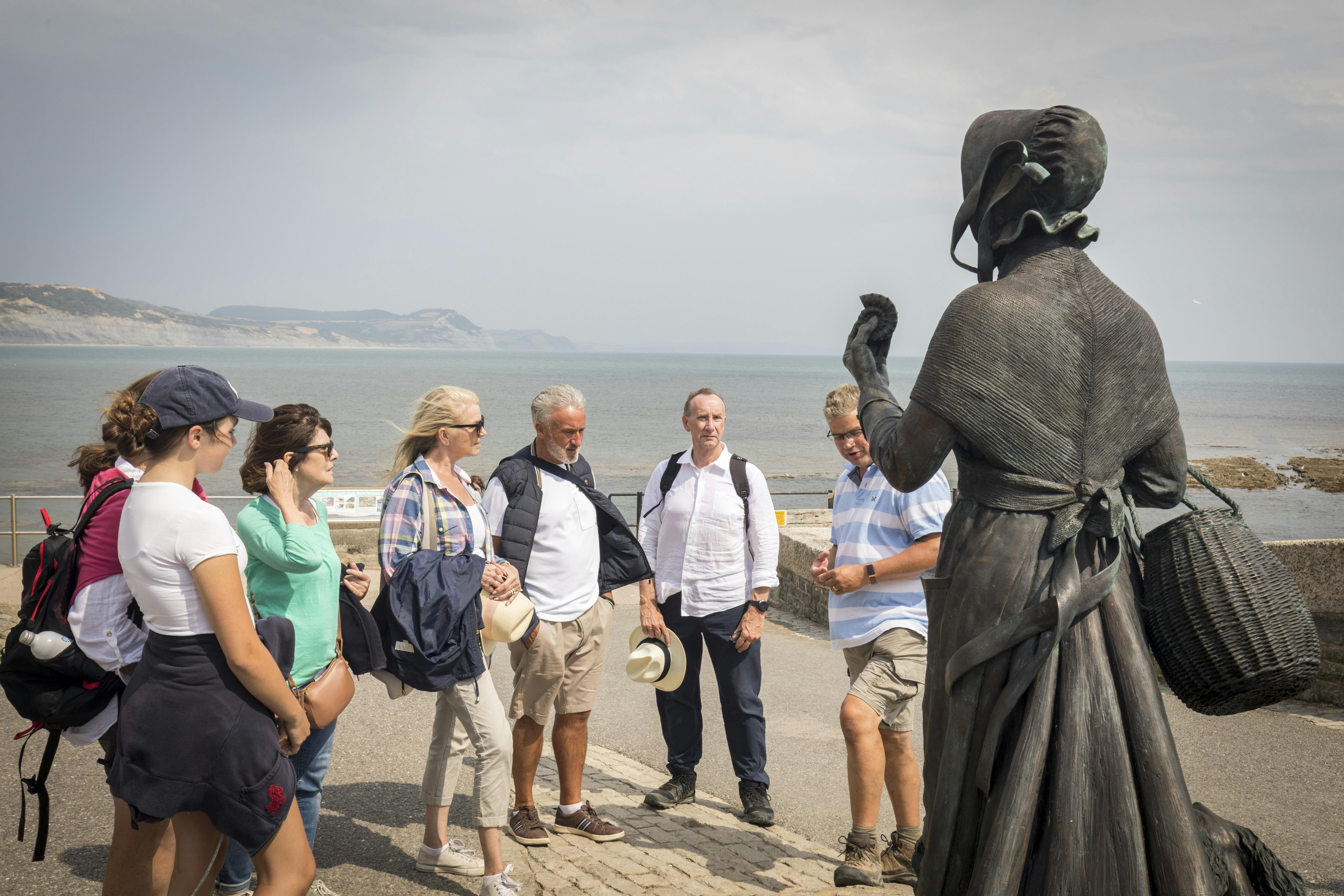3 fossil finds that changed the way we see the world

Fossils are so much more than the ancient remains of eras long locked away in history. When you understand how they came to be here and how they amazed people then and continue to amaze now, you understand how fossils have the power to change the way we see the world around us, both physically and intellectually.
Fossils have transformed our understanding of the history of the world, and some fossil finds are so special that they moved hearts and changed minds. And when you combine these fossils with an understanding of geology, the layers of time peel back to reveal the scene upon the earth beneath your feet as it might have looked millions of years ago – adding texture and context to the way you physically see the world around you, whether you’re on an escorted tour in the Canadian Rockies or gazing out across the sea from England’s south coast.
Here are three landmark fossil finds that changed the way we see the world.
1. The first dinosaur discovered in Alberta, 1884

Alberta, Canada has given us hundreds of important fossils, including the largest marine reptile ever found (Shonisaurus sikanniensis) and the world’s best-preserved armoured dinosaur (Borealopelta markmitchelli). But they might not have been so carefully unearthed if, in 1884, Joseph Burr Tyrrell hadn’t first discovered the skull of a 70-million-year-old dinosaur while searching for coal deposits in the Red Deer River Valley. That skull, now known as Albertosaurus sarcophagus, shed light on the presence of dinosaurs in North America and paved the way for subsequent fossil and dinosaur discoveries in Alberta.
Today, the area is one of the most important regions in the world for palaeontology. Alberta’s Badlands, with Dinosaur Provincial Park UNESCO World Heritage Site at its heart, is an otherworldly place with wind-sculpted hoodoos and multi-hued canyons. Yet this landscape would be utterly unrecognisable to the dinosaurs who roamed here 75 million years ago. The area’s fossils show us that this was once a subtropical forest of towering redwoods and giant ferns by a warm and shallow sea.
You can see evidence of that ancient shoreline, by visiting the Royal Tyrrell Museum just a few kilometres from where Tyrrell made his discovery, and explore parts of Dinosaur Provincial Park not usually open to the public on our escorted tour to Canada: The Rockies and the Badlands: Geology and Dinosaurs in Canada.
2. Mary Anning’s discoveries, UK, from 1811

Born in 1799 to a poor family in Lyme Regis on the Dorset coast, southern England, Mary Anning was an unlikely but highly successful palaeontologist and fossil collector. Her discoveries played an important part in fuelling interest in geology and palaeontology among the Georgian public, as well as helping to form the basis for our understanding of dinosaur evolution.
In 1811, Lyme Regis was already a popular holiday spot, known for the ammonites buried along its shoreline, when Mary’s brother found a fossilised skull. Mary carefully revealed the skull’s 5.2-metre-long skeleton. The discovery was eventually named Ichthyosaurus, a marine reptile that lived 201-194 million years ago. In 1823, Anning discovered the first complete skeleton of a Plesiosaurus. Five years later, Anning uncovered what turned out to be the first remains of the first pterosaur discovered outside Germany.
Although the male scientists who studied Anning’s extraordinary scientific discoveries refused to credit her, a woman, Anning’s work continues to captivate people today. You can see several of her discoveries in London’s Natural History Museum. Her legacy lives on in Lyme Regis, too. The Dorset coast that she called home is now part of the Jurassic Coast UNESCO World Heritage site, renowned for its spectacular coastal scenery, rock formations, fossils, and geological landforms. It’s one of the few parts of the world where you can glimpse 185 million years of the Earth’s history in one place.
Intrigued? Our Fascinating Landforms and Fossil Treasures of England’s Jurassic Coast geology tour shows you how this dramatic coast and landscape evolved, and takes you to the best places for fossil hunting, so you can follow in Mary Anning’s footsteps and search for your own Ichthyosaur.
3. The first Archaeopteryx, southern Germany, 1861

When the first correctly identified Archaeopteryx lithographica was discovered in southern Germany, Charles Darwin’s On The Origin of Species was just two years old. The book had already thrown the established beliefs of the Victorian world into disarray by introducing the idea of natural selection.
Darwin’s theory was famously based on his trip to the Galapagos Islands and an array of evidence based on living nature samples and biogeography. At the time, the study of palaeontology was still relatively new and the dinosaur fossils discovered seemed to belong to a completely different world, with no connection to other animals. To Darwin, they were evidence of how the strongest did not always survive.
Archaeopteryx changed that. The fossil clearly showed an imprint of feathers – suggesting a bird – around a skeleton showing teeth, tail bones and clawed fingers – none of which are associated with birds.
Although this fossil is often considered the ‘missing link’ between birds and dinosaurs and reptiles , Darwin was reluctant to jump on the find as evidence of evolution. At the time, scientists wrongly believed that fossilised three-toed tracks found in Connecticut Valley belonged to gigantic birds, meaning that the Archaeopteryx was deemed too late to be significant in this branch of evolution.
Instead, Darwin thought of the find as a sign that there was still so much more to learn about the history of life on earth – an exciting notion that we believe still applies today!
You can learn to peel back the layers of time using fossils and geology on our escorted tours to Canada, USA, UK, and Europe.
